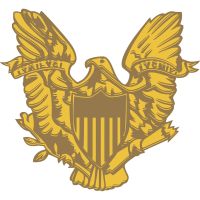
10 Things to Know About Proof Coins for Investment
In 1252, Florence, Italy, became the first world city to mint gold coins. In ancient times, collecting old coins was a royal hobby, only for kings and queens. In today's society, investors can purchase proof coins as part of their financial portfolio.
While the average citizen won't ever match the Smithsonian's 1.6 million-piece coin collection, they can enjoy the benefits of solid investing when they understand the numismatic value of coins.
Numismatic refers to what an investor receives when selling their coins. In the U.S., a numismatist completes a six-course study program that qualifies them to become a professional coin grader. Coin grading is just one of the things you need to understand when investing in proof coins.
1. Minting Proof Coins
For investment purposes, proof coins are the cream of the crop. Minting involves a unique process, which includes striking the coin multiple times on a special planchet or coin blank. This creates a deep, frosted design with a highly polished, mirror-like finish.
The coins are produced in limited quantities, making them rare, in addition to their high quality and beauty.
In ancient Rome, commemorating special events and honoring dignitaries were done with proof coins. Proof coins also were popular as gifts for dignitaries. The first milled coins were produced during the 16th century in Europe and became popular during the 19th century when collectors desired higher-quality coins.
2. U.S. History of Proof Coins
In 1817, the U.S. Mint began producing proof coins. The first official proof set became available to the public in 1856. You can buy proof coins as pennies, nickels, dimes, quarters, half dollars, and one-dollar coins.
Between 1936 and 1972, all proof sets included the half-dollar, quarter, dime, nickel, and penny. Between 1935 and 1955, the sets were issued in small cardboard boxes. In 1955, the Mint began placing proof coins in a transparent cellophane holder.
In 1968, production of proof coins moved from Philadelphia to San Francisco. All proof coins from that production year contain the "S" mintmark. If you find a proof set without the mark, it is extremely rare and valuable.
The Mint added the dollar coin to mint sets in 1973, then removed it in 1982. Proof set production with five different statehood quarters issued between 1998 and 2008. The 2009 proof sets contain 18 coins, which is the most of any set.
Keeping up with the history of proof sets ensures you know a rare and valuable coin when you see it.
3. The Difference in Coins
Every investor should be able to answer, "What are proof coins compared to other coins for collecting or investing?" There are five types of coins available, and knowledge about their differences is critical to purchasing an item of value.
Proof coins follow the unique minting process described above. Because production is in lower, limited quantities, the intended use is for investment and collecting.
Uncirculated coins are not proof coins. They are struck on special planchets and have a higher-quality finish than coins in circulation. The quality is lower than proof coins.
Circulating coins are for everyday use as currency. Production is in large quantities and has a lower-quality finish.
Brilliant uncirculated coins use the same minting process as circulating coins but on special planchets that create a higher-quality finish. They are popular for investment purposes.
Bullion coins are produced in large quantities for investment. They are minted from precious metals, including platinum, silver, and gold, with a high-quality finish. The quality is lower than a proof or brilliant uncirculated coin.
Their value is in the metal they contain. Bullion coins provide investors with flexibility based on the variety of weight and design options.
4. Most Valuable U.S. Proof Sets
When using proof coins for investment, you'll want to stay up-to-date on market value for purchasing and selling.
The most valuable U.S. proof sets as of October 2023 are the following:
- 1936 Proof Set
- 1939 Proof Set
- 1937 Proof Set
- 1990 Proof Set with no "S" cent
- 1968 Proof Set with no "S" Roosevelt Diam
The value of the above sets ranges from roughly $6,325 to $35,250.
The American Eagle proof coin is one of the most popular and is available in silver, gold, and platinum. Both investors and collectors seek this coin for their portfolios. A stable, reliable investment option, the coin is issued yearly in an alternative finish with a limited production of 7,500 coins and a household limit of one.
5. Coin Grading
Coin grading follows a scale of one to 70, with one at the low end and 70 being the best condition possible. Grading companies evaluate the coins and encapsulate them into a sealed plastic holder with a printed label containing the coin's grade.
When grading a coin, things that impact its value include whether it is in circulation, is well-struck, and its overall condition. The grading levels include:
- Poor (PO): PO-1 is the lowest grade possible; at this level, the date and type are about the only discernible marks
- Fair (FA)
- Almost Good (AG): G-4 means most lettering is visible and may be hard to see
- Good (G)
- Very Good (VG)
- Fine (F): F-12 means the lettering and digits are all clear and crisp
- Very Fine (VF)
- Extremely Fine (EF or XF): may not notice circulation wear, but at close inspection, will show minor wear on high points
- Almost Uncirculated (AU): desirable, shows little wear, easy to mistake for uncirculated
- Mint State (MS): tend to be in high demand by advanced numismatists; they show no evidence of circulation wear and look the same as went minted
When looking at a graded coin, the "PR" or "PF" stands for proof and indicates which system determines the grading. The Professional Coin Grading Service (PCGS) uses the "PR" designation. The Numismatic Guaranty Corporation (NGC) uses the "PF" designation.
6. Valuable During Inflation
Because precious metals are non-correlated assets, gold, silver, and platinum are not impacted by the country's economic conditions. This means that even when inflation is high and the value of a flat currency is low, you can buy precious metals with confidence they will maintain or increase in value.
Inflation hurts the value of bonds, stocks, and real estate investments. Investing in precious metals, including bullion, investment coins, rare coins, and proof coins, as part of your investment strategy gives you a portfolio that can maintain value through the roller-coaster ride of other investment options.
7. Trends and Market Demands
Pricing for precious metals and bullion coins impacts the value of proof coins. Evaluating and gaging the market for precious metals is essential for solid investment practice.
According to the June 2, 2023 edition of Numismatic News, the overall price for collector coins worldwide is rising. There are a few glitches where supply exceeds demand.
This includes pre-1965 bullion circulation coins and low-grade pre-1033 coins. Anything at least Mint State 60 (MS-60) holds or rises in value.
8. Portfolio Diversification
Smart investing involves having a diversified portfolio. Even if you already buy silver, gold bullion, and platinum coins, proof coins diversify your portfolio further because of their high numismatic value. This provides you with additional ways to profit from your investment.
9. Avoid Counterfeiters and Scams
You can reduce your risk of investing in counterfeit coins by purchasing through a respected dealer that guarantees the authenticity of the proof coin. Both the U.S. Mint and Royal Canadian Mint take steps to prevent counterfeiting, which secures the value of your investment.
In the U.S., the Hobby Protection Act requires the word "copy" to be permanently marked on imitation coins and other numismatic items. This does not prevent businesses in foreign countries from producing imitations without proper marking and selling them online to unwary buyers.
10. Investing in Proof Coins
To obtain proof coins that will fulfill your investment needs, follow these tips:
Establish a budget to determine what an affordable investment level is for you. The beauty about proof coins is you can add them to your portfolio whether you have a couple hundred or a couple million dollars to invest. Proof coins will cost more than silver bars or basic gold coins.
Developing a Relationship with a reputable dealer can help you stick to your budget and determine the best products that meet your goals without exceeding your budget.
Do Your Research to determine the coin's history, rarity, and market value before purchasing.
Purchase Quality-look for coins free of blemishes, scratches, or other flaws. Proof coins are about quality, so only purchase those in excellent condition.
Patience is necessary to find proof coins of high quality because of their rarity. Take your time with a purchase; verify the quality and pricing first.
Purchase through a reputable dealer who provides coins certified by a grading service.
Proper Storage is imperative for maintaining the integrity of your investment-store coins in a protective holder in a cool, dry location away from moisture and sunlight. If you cannot properly store your proof coins, they will likely lose value over time.


Learn More About Proof Coins
Sought after by collectors and investors, you will want to add some unique, rare, and valuable proof coins to your portfolio. Whether you are a seasoned investor or starting, we encourage you to contact the U.S. Gold Bureau for a free copy of our Precious Metals Investor's Guide. This publication details the secrets of purchasing precious metals, including the top ten coins to obtain from the U.S. Mint and how to secure your portfolio, even during market drops.




